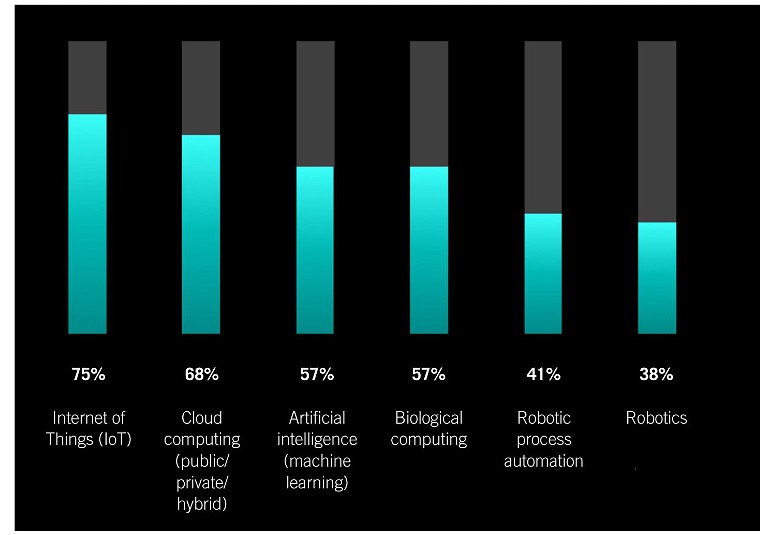Digital Health
The Coming of Age for Digital Health
Virtual and digital healthcare was slowly being adopted across all aspects of the life science industry, but the pandemic has accelerated this adoption greatly
Heather Fraser at IBM Institute for Business Value
Digital health has been the holy grail of the healthcare industry for many decades. Healthcare bodies, regulatory authorities, and academics declared that digital health would help individuals to lead healthy lives, promote wellbeing across populations, and reshape healthcare. But while there have been some good examples of digital health in action around the globe, adoption has been slow and patchy. In 2020, a catalyst arrived in the shape of the COVID-19 pandemic, resulting in an accelerated uptake of virtual and digital services out of necessity. Healthcare organisations needed to quickly pivot to connect caregivers and patients remotely and safely, and manage the health of the population.
Although there are numerous definitions for digital health, they all focus on empowering individuals to take control and make informed decisions about their own health and wellness. This requires a range of digital tools and technologies to connect consumers with care delivery, from traditional settings, such as the hospital, to the home. Healthcare and wellness delivered conveniently to everyone, everywhere will facilitate prevention of disease, enable early diagnosis of life-threatening diseases, and help in the management of chronic conditions.
Additionally, there has been a growing trend toward healthcare consumerism – amovement to make the delivery of health services more efficient, convenient, and cost effective. This has included finding a doctor or specialist using online referral tools, to personalising the experience through to accessing virtual health services and capabilities. Consumers want the same digital experience and convenience for their health as they experience in other parts of their life, such as home shopping or online banking.
Technology innovation has profoundly changed how health is measured, managed, and delivered today, and how life science discovers, develops, and produces drugs. Artificial intelligence (AI) provides the capabilities for learning and decision support with health apps facilitating new health insights, decisions, and behavioural change. Mobile is important for providing direct, anytime, anywhere access for the individual with connected health devices and IoT allowing for continuous monitoring to provide patient insights. Hybrid cloud technology enables health organisations to work collaboratively. With healthcare and life science being among the most highly regulated industries, organisations need technologies that address critical imperatives of increased security, protection of highly sensitive patient data, and meeting regulatory compliance while reducing risk.

Figure 1: Technologies most likely to help life science CEOs to deliver results over the next 2-3 years? © IBM Corporation, IBM Institute for Business Value
But in light of a strained and reconfigured healthcare system due to COVID-19 – and with many patients self-isolating – the rate of adoption and use of digital health facilities has increased rapidly. Primary care practitioners, from doctors, nurses, and pharmacists, transitioned to predominately virtual consultations in a matter of weeks. Virtual health appointments complement in-person interaction and offer digital checkpoints with care facilities to reduce the cost of care for all, even those with complicated conditions that require monitoring and regular provider check-in. With individuals having to socially distance or self-isolate, there was the potential for the spread of mental, as well as physical, issues (see Digital Mental Health boxout):
Digital Mental Health
Today, individuals seeking answers, therapies, and education related to mental health issues can easily access digital tools. Wearables and mobile devices apps are also becoming commonplace and provide the ability to self-monitor many aspects of mental and physical health. Mental health apps range from general wellness apps to disorder-specific mental health apps and allow a range of capabilities from monitoring medication management to physiological data collection and tracking, to behavioural self-assessment and monitoring. The technology also allows patients to check their own moods and conditions to help them take healthy corrective actions. The ability to assess and intervene immediately for patients in a 24/7, real-time manner can revolutionise mental health care.
- Adigital version of non-emergency helpline, provided a digital out-patients service, reducing unnecessary trips to the hospital for minor issues, while directing more serious cases towards physical care services
- In-home virtual assistants connect patients to pertinent information and expertise and social and emotional support. For example, the systems provide family members the support and help to monitor medication management and compliance for elderly relatives
- Technology platforms can be used to match volunteers to help older adults experiencing loneliness offering customised and personalised solutions to help combat loneliness and isolation with interaction and inclusion
- Combining AI with health data to provide virtual coaches for patients to address significant health and wellness challenges, including the management of chronic conditions, pre- and post-operative care
As we make plans for life beyond the pandemic, will the momentum for digital health continue apace? Digital solutions, such as AI-enabled virtual assistants can identify, monitor, and motivate patients through natural disease progression, or offer guidance through a treatment and rehabilitation exercise regime for payers, providers, and members. They can also enrich the user experiences making it simpler and highly personalised. The benefits of digital engagement include better health outcomes, fewer readmittances after initial diagnosis or procedure, better and more instances of preventative care, and more people with access to care living healthier and more fulfilling lives. While the cost of care decreases, patient satisfaction and retention can grow.
Build on your experience of digital health before and during the pandemic to:
- Fast-forward adoption of digital health across the population you serve
- Move towards a hybrid health setting – physical with digital
- Drive data-led innovations across the healthcare ecosystem
References
References
1. Visit: www.ibm.com/thought-leadership/institute-business-value/c-suite-study/ceo
2. Visit: www.ibm.com/thought-leadership/institute-business-value/report/medical-device-security
3. Visit: www.ibm.com/thought-leadership/institute-business-value/report/mental-health-tech
4. Visit: www.ibm.com/thought-leadership/institute-business-value/report/loneliness

Heather Fraser, Global Life Sciences & Healthcare Lead and IBM Industry Academy Member at the IBM Institute for Business Value, is changing how traditional and non-traditional parties across healthcare think about using new technologies to provide optimum patient outcomes. Her research and thought leadership include stimulating collaboration among life science, providers, payers, regulators, and beyond to nutrition, electronics, and telecoms. She is working to improve patient outcomes through encouraging the use of emerging technologies, for example AI and virtual assistants, to triage patients, and blockchain for securing the supply chain for vaccines. Heather is a registered pharmacist, with a career in healthcare, life science, community pharmacy, consulting, and technology.
hfraser@uk.ibm.com